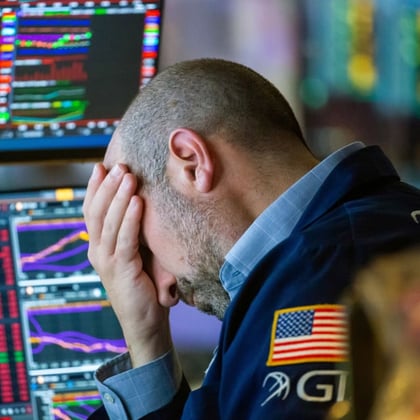What You Need to Know
- Once the NYSE determines how much it has to cover the claims, the amount will be divided proportionally, according to sources with knowledge of the matter.
- Industry professionals are waiting to see how much is available in the pot to cover the losses.
Investors hurt when a New York Stock Exchange malfunction sparked wild swings in stock prices are trying to recoup their losses. There’s reason to doubt they’ll get all their money back.
Losses incurred during NYSE’s system glitch last week could amount to millions of dollars, and thousands of claims have been submitted by retail brokerages including Charles Schwab Corp. and Robinhood Markets Inc., as well as market makers Virtu Financial Inc. and Citadel Securities, according to people with knowledge of the situation.
Those claims, which were submitted by a Friday deadline under NYSE rules, are likely to exceed the $500,000 that the exchange operator sets aside to cover disruptions each month, the people said, asking not to be identified discussing a private, ongoing matter. Those rules give NYSE until the end of the month — today — to evaluate the claims and decide how much to pay.
The likely losers from the Jan. 24 glitch are individual investors, who stand to recoup a fraction of their losses, if anything, under the NYSE liability rules, people familiar with the process said. Discussions are still underway and a final decision on reimbursements has yet to be made, the people said.
“Full recovery for retail investors will be somewhere between slim and none,” James Cox, a Duke University School of Law professor specializing in corporate and securities law, said in an interview. “Procedural issues are stacked against retail investors. And questions that need to be answered are stacked in favor of the NYSE.”
Spokespeople for Charles Schwab, Citadel Securities and Virtu all declined to comment.
“We are in the process of evaluating claims related to the Jan. 24 market open in accordance with our rules and will advise claimants of the outcome once our review is complete,” NYSE spokesperson Farrell Kramer said in an emailed statement.
Some trades made during the mishap have already been canceled, the exchange said last week.
“The impact of the NYSE outage was minimal given limited client exposure to the affected trades and timely risk management on part of the firm,” a Robinhood representative said in an emailed statement. “Nevertheless, this event and similar issues in the past” are arguments against a US Securities and Exchange Commission proposal requiring retail orders to be executed through exchange-run auctions.
How much is available in the pot to cover the losses is what industry professionals are waiting to find out. The ultimate decision is going to be made by an internal panel at NYSE that determines, on a case-by-case basis, what adjustments will be made, if any, for trades submitted for recovery of losses.
NYSE rules and the size of the incident cast doubt on the likelihood of the exchange paying all claims in full. Under existing laws, NYSE is allowed to set aside $500,000 each month to cover disrupted trading events. Under some circumstances, an additional $50,000 from previous months can carry over and add up over time.









 January 31, 2023 at 02:41 PM
January 31, 2023 at 02:41 PM











